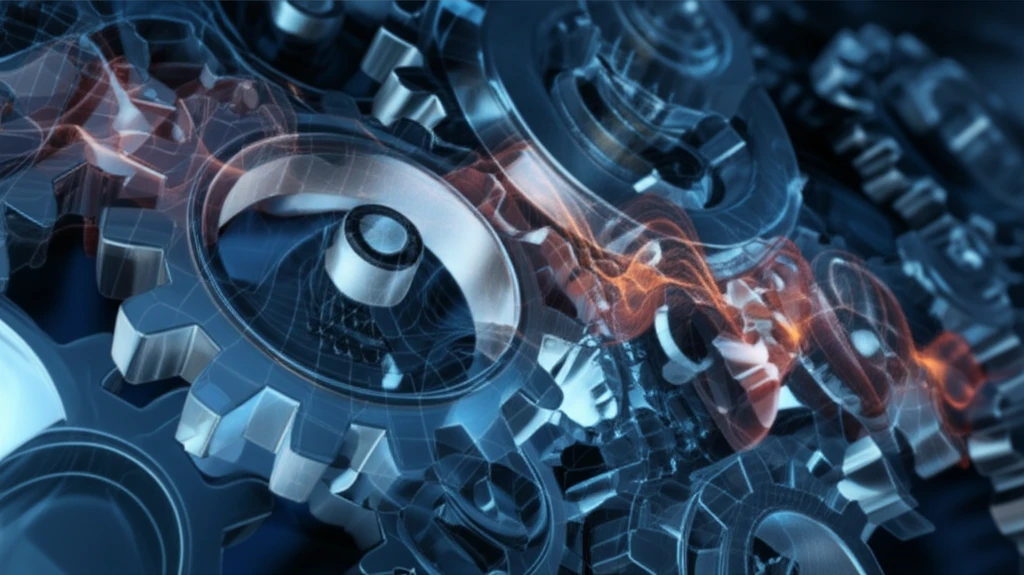
Gear Vibration Decoded: How to Minimize Noise and Maximize Performance
"A Deep Dive into Coupled Bending-Torsional Vibration Models for Gear-Rotor Systems"
Gears are vital components in countless machines, from everyday vehicles to complex industrial equipment. However, their operation is often plagued by unwanted vibrations and noise. These vibrations aren't just a nuisance; they can lead to reduced efficiency, accelerated wear, and even catastrophic failures. Understanding and mitigating gear vibration is therefore crucial for ensuring the reliable and optimal performance of any mechanical system relying on gears.
Unlike simple single-rotor systems, geared rotor systems present unique challenges. The interaction between gears introduces complex dynamic behaviors, where the motion of one rotor directly influences others. These systems demand advanced modeling techniques to accurately capture and predict vibration patterns.
This article delves into a sophisticated approach for analyzing gear vibration: the coupling bending-torsional vibration model. By understanding the principles behind this model, engineers and enthusiasts alike can gain valuable insights into minimizing noise and maximizing the performance of gear-driven machinery.
The Key: Modeling Coupled Vibrations

Traditional methods often fall short when analyzing geared rotor systems because they fail to account for the intricate coupling between bending and torsional vibrations. Bending vibrations refer to the oscillations of the rotor shaft, while torsional vibrations involve twisting motions. In reality, these two types of vibrations are interconnected and influence each other significantly.
- Finite Element Analysis (FEA): Creating a detailed computer model of the rotor-bearing system to simulate its behavior under various conditions.
- Newton's Second Law: Applying the fundamental laws of motion to describe the forces and torques acting on the gear pair.
- Coordinate Transformations: Unifying different coordinate systems to represent the entire system in a consistent manner.
Practical Implications and Future Directions
The coupling bending-torsional vibration model offers a powerful tool for optimizing gear designs and minimizing vibration-related issues. By accurately simulating system behavior, engineers can identify potential problems early in the design process and implement effective solutions.
Moreover, this modeling approach can be used to develop active vibration control strategies, where sensors and actuators are used to actively dampen vibrations in real-time. This can lead to significant improvements in performance and reliability, especially in demanding applications.
As computational power continues to increase, more sophisticated models will become feasible, allowing for even more accurate predictions and optimized designs. This will pave the way for quieter, more efficient, and more reliable gear-driven machinery in the future.
